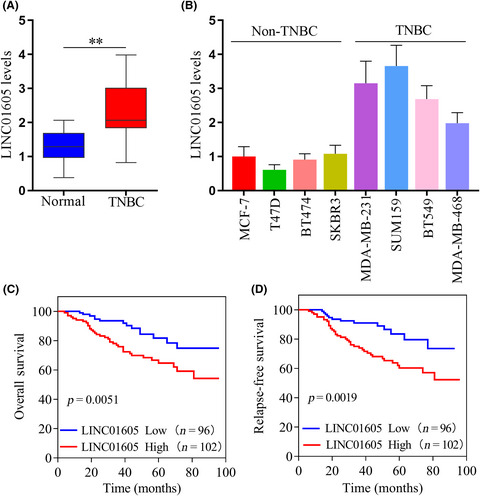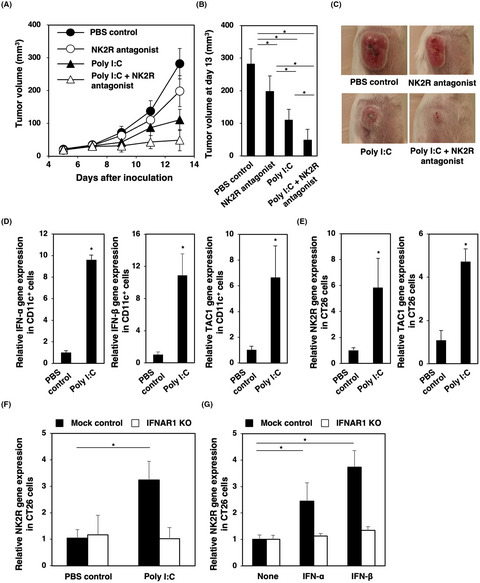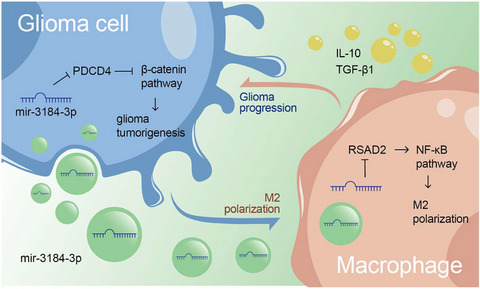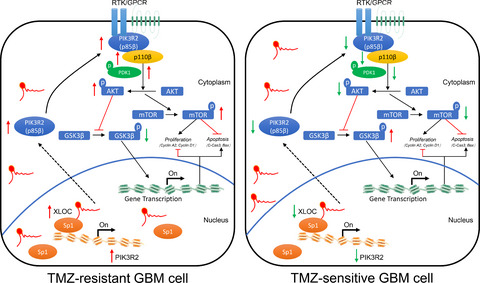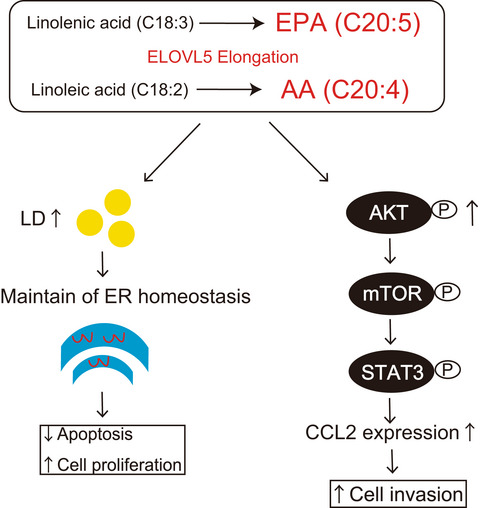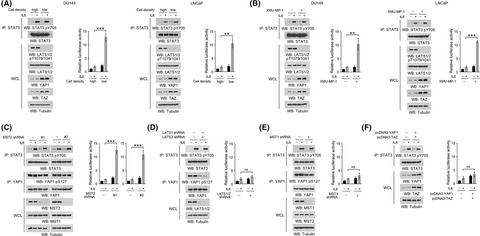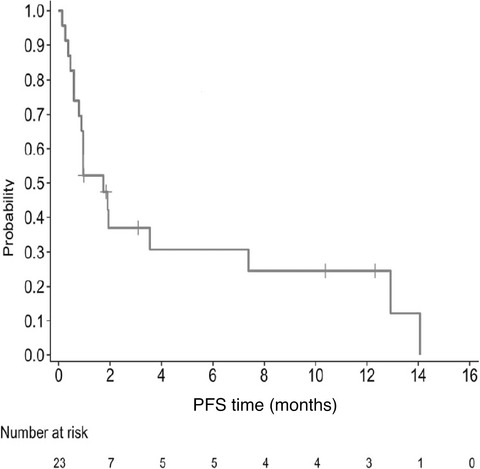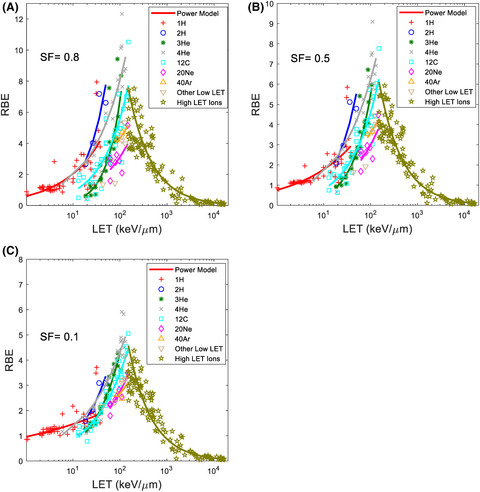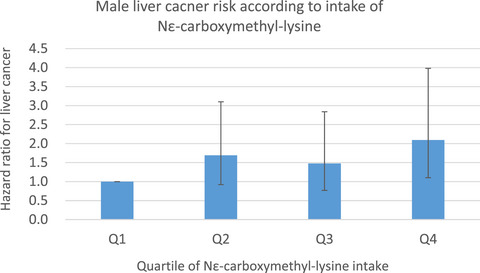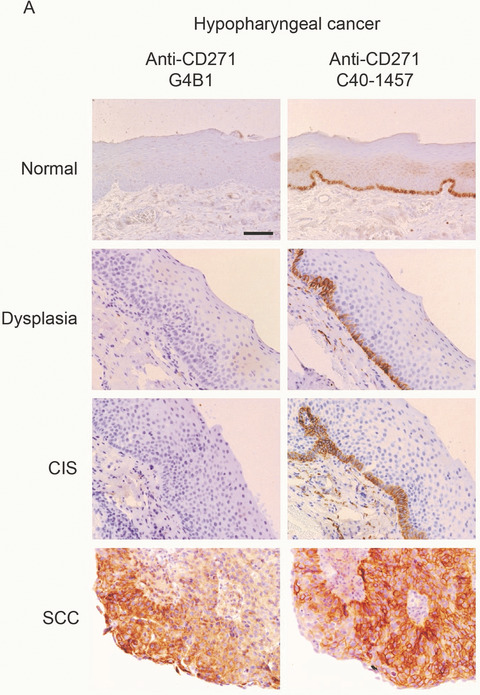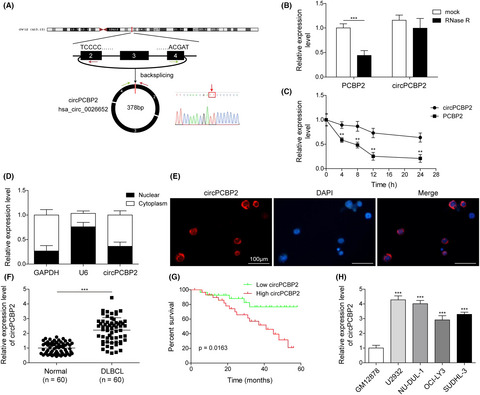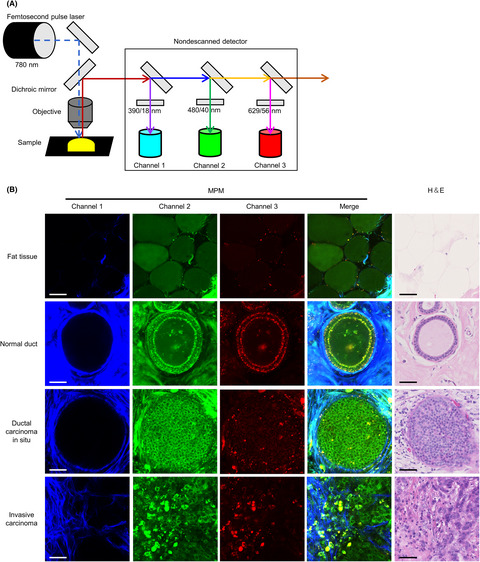Journal list menu
Export Citations
Download PDFs
ISSUE INFORMATION
IN THIS ISSUE
In this issue: Volume 113, Issue 8, August 2022
- Pages: 2481-2483
- First Published: 07 August 2022
ORIGINAL ARTICLES
Basic and Clinical Immunology
LINC01605 promotes aerobic glycolysis through lactate dehydrogenase A in triple-negative breast cancer
- Pages: 2484-2495
- First Published: 11 April 2022
Growth arrest-specific transcript 5 represses endometrial cancer development by promoting antitumor function of tumor-associated macrophages
- Pages: 2496-2512
- First Published: 09 May 2022
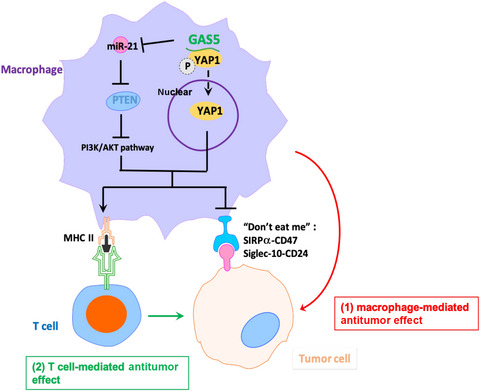
Long noncoding RNA growth arrest-specific transcript 5 (GAS5) promotes M1 polarization by activating the microRNA-21-PTEN-AKT signaling pathway and directly repressing the nuclear accumulation and phosphorylation of oncogenic yes-associated protein 1 (YAP1) in tumor-associated macrophages (TAMs) of endometrial cancer (EC). The antitumor effects of GAS5 on TAMs brings novel ideas and identifies potential targets of EC.
IFN-α/β-mediated NK2R expression is related to the malignancy of colon cancer cells
- Pages: 2513-2525
- First Published: 13 May 2022
A tumor metastasis-associated molecule TWIST1 is a favorable target for cancer immunotherapy due to its immunogenicity
- Pages: 2526-2535
- First Published: 17 May 2022
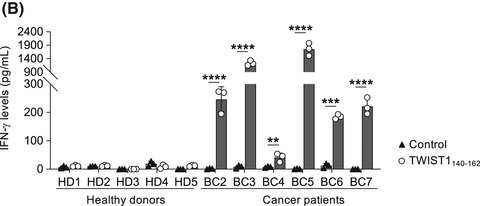
We hypothesized that highly immunogenic molecules are allowed to be expressed in tumor cells after immune suppressive tumor microenvironment was established, if these molecules contribute to tumor survival.We found that a tumor metastasis-associated molecule TWIST1 had an immunogenic enough to expand TWIST1-specific T-cells.These findings indicate that TWIST1 is a highly immunogenic shared antigen and a favorable target for cancer immunotherapy.
A single immunization with cellular vaccine confers dual protection against SARS-CoV-2 and cancer
- Pages: 2536-2547
- First Published: 22 May 2022
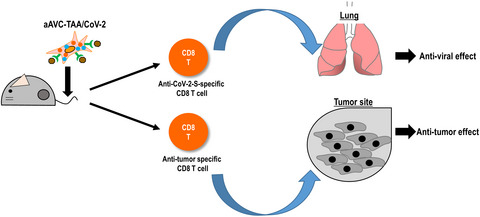
Due to the insufficient efficacy of current COVID-19 vaccines in cancer patients, such high-risk groups require more efficient vaccines that induce a strong memory response and provide dual protection against cancer and COVID-19. We showed that SARS-CoV-2 spike protein-expressing artificial adjuvant vector cells (aAVC-CoV-2) elicited the production of robust and long-lived spike protein-specific multifunctional cytotoxic T lymphocytes (CTLs) capable of infiltrating the lung parenchyma, thus illustrating the distinct advantage of using aAVC-CoV-2 as a second-line vaccine, especially for individuals who are resistant to the current COVID-19 vaccines. In addition, aAVCs expressing tumor-associated antigen (TAA) and spike protein caused a dual induction of TAA-specific CD8+ T cells and spike protein-specific CD8+ T cells and provided sufficient protection against tumors, suggesting an effective strategy for treating cancer patients while simultaneously preventing SARS-CoV-2 infection.
Prosaposin, tumor-secreted protein, promotes pancreatic cancer progression by decreasing tumor-infiltrating lymphocytes
- Pages: 2548-2559
- First Published: 28 May 2022
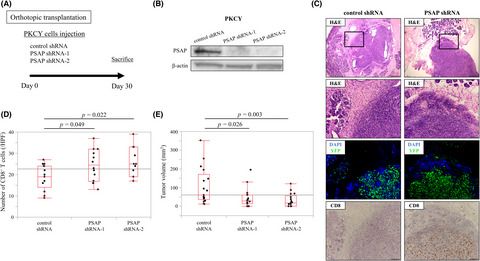
We employed glycoproteomics with tandem mass tag labeling to investigate the culture media and attempted to identify the key secreted proteins from pancreatic ductal adenocarcinoma (PDAC) cells. Prosaposin which was identified suppressed CD8+ T cell infiltration, leading to promotion of PDAC progression in human resected PDAC tissues and an in vivo experiment.
Carcinogenesis
HDAC5, negatively regulated by miR-148a-3p, promotes colon cancer cell migration
- Pages: 2560-2574
- First Published: 16 May 2022

HDAC5 was highly expressed in colon cancer tissues and negatively correlated with the expression of miR-148a-3p. HDAC5 markedly increased the invasion and migration of cancer cells in vitro and in vivo. And this effect that could be inhibited by overexpression of miR-148a-3p. Moreover, miR-148a-3p/HDAC5 axis might exert its function through the EMT pathway by regulating Vimentin expression.
27-Hydroxycholesterol promotes metastasis by SULT2A1-dependent alteration in hepatocellular carcinoma
- Pages: 2575-2589
- First Published: 23 May 2022
Analysis of microbiome in gastrointestinal stromal tumors: Looking for different players in tumorigenesis and novel therapeutic options
- Pages: 2590-2599
- First Published: 28 May 2022
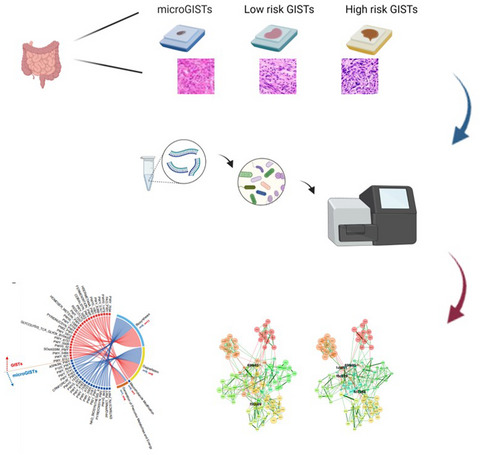
This is the first work analyzing microbiome community in GIST and microGIST looking for novel players in GIST tumorigenesis. Our results highlight that specific differences do exist in the microbiome community between GISTs and benign lesions and that microbiome restructuration can happens and may drive the carcinogenesis process. Beside molecular alterations taking place over GIST evolution to malignant lesions, a key under-considered factor can be represented by tumor microenvironment (i.e., microbiome) and further studies should deepen its role. The figure was partially created with Biorender.com.
AUP1 regulates lipid metabolism and induces lipid accumulation to accelerate the progression of renal clear cell carcinoma
- Pages: 2600-2615
- First Published: 28 May 2022
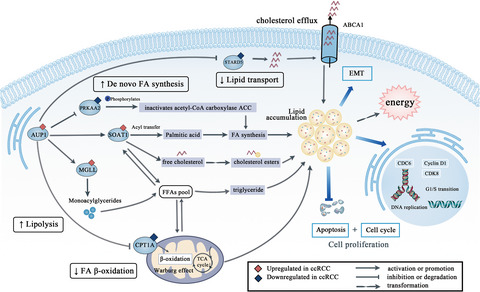
We used a publicly available database to construct a prognostic risk model for ccRCC, and through subsequent verification and multi-parameter analysis, we screened and extracted that AUP1 is significantly highly expressed in ccRCC and is closely related to the clinical prognosis. Combined with RNA-seq, in vivo, in vitro experiments and clinical samples, we revealed that AUP1 induced lipid accumulation in ccRCC by mediating fatty acid and cholesterol pathways, and realized lipid reprogramming, thus promoting the progression of ccRCC.
H1.0 induces paclitaxel-resistance genes expression in ovarian cancer cells by recruiting GCN5 and androgen receptor
- Pages: 2616-2626
- First Published: 31 May 2022
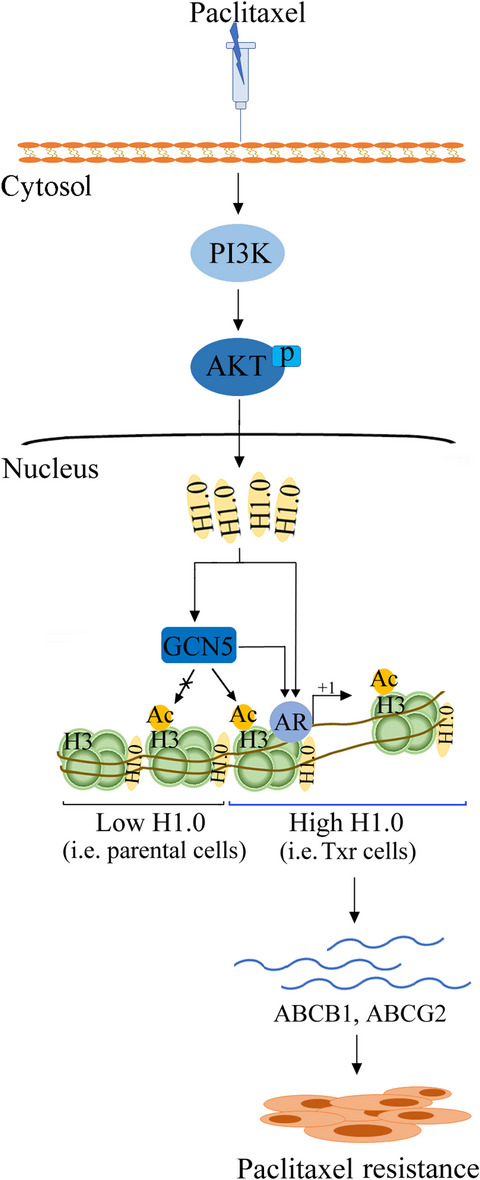
To better understand the molecular mechanism underlying taxol resistance (Txr), we explored the axis PI3K/AKT/H1.0 recruiting GCN5 and AR to upregulate Txr genes, ABCB1 and ABCG2. This study is the first report describing the relationship between histone H1.0 and GCN5 which cooperate to induce AR-dependent Txr in ovarian cancer cells.
Comprehensive network analysis of dysregulated genes revealed MNX1-AS1/hsa-miR-4697-3p/HOXB13 axis in ovarian cancer chemotherapy response
- Pages: 2627-2641
- First Published: 31 May 2022
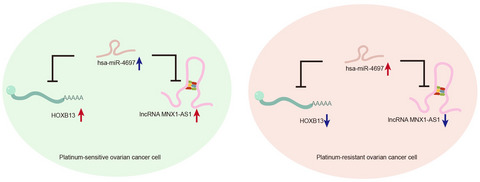
Our work revealed the chemotherapy response related dysregulated function, transcriptional regulation, and lncRNA based ceRNA regulation landscape in OC, thus offered a novel and comprehensive insight into chemotherapy response. Also, we validated the MNX1-AS1/ has-miR-4697-3p/ HOXB13 axis could affect carboplatin sensitive for the first time, which could be potential targets for improving chemotherapy response in OC.
The carbonic anhydrase inhibitor acetazolamide inhibits urinary bladder cancers via suppression of β-catenin signaling
- Pages: 2642-2653
- First Published: 20 June 2022
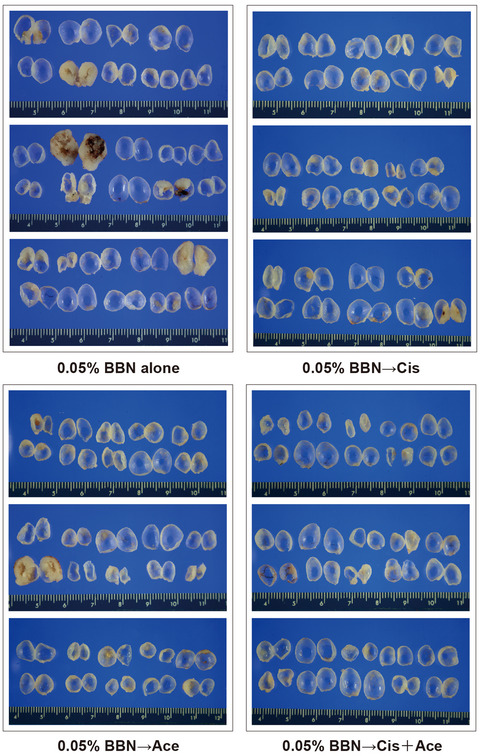
Carbonic anhydrase inhibitor acetazolamide (Ace) significantly inhibited muscle invasion of urothelial carcinomas (UC) and that combined treatment with Cisplatin and Ace significantly inhibited both overall UC incidence and muscle invasion in mice. Our data demonstrate a functional association of CA2 with UC development and progression and suggest that CA2 is a potential therapeutic target for UC.
Cell, Molecular, and Stem Cell Biology
CD44v3,8-10 is essential for Slug-dependent vimentin gene expression to acquire TGF-β1-induced tumor cell motility
- Pages: 2654-2667
- First Published: 01 April 2022

In this study, we show that CD44v3,8-10 and CD44v8-10 are involved in the acquisition of migratory and invasive properties associated with TGF-β1-induced EMT, and only CD44v3,8-10 induces the transcription of vimentin mediated by the EMT transcription factor Slug. Clinically, tumors with the combination of CD44v9 expression and EMT features were significantly associated with tumor invasive and metastatic activities. Therefore, targeting CD44v may be a promising therapeutic strategy to prevent tumor progression at the early stage of gastric cancer.
miR-3184-3p enriched in cerebrospinal fluid exosomes contributes to progression of glioma and promotes M2-like macrophage polarization
- Pages: 2668-2680
- First Published: 11 April 2022
lncRNA XLOC013218 promotes cell proliferation and TMZ resistance by targeting the PIK3R2-mediated PI3K/AKT pathway in glioma
- Pages: 2681-2692
- First Published: 30 May 2022
Integration of human inspection and artificial intelligence-based morphological typing of patient-derived organoids reveals interpatient heterogeneity of colorectal cancer
- Pages: 2693-2703
- First Published: 18 May 2022
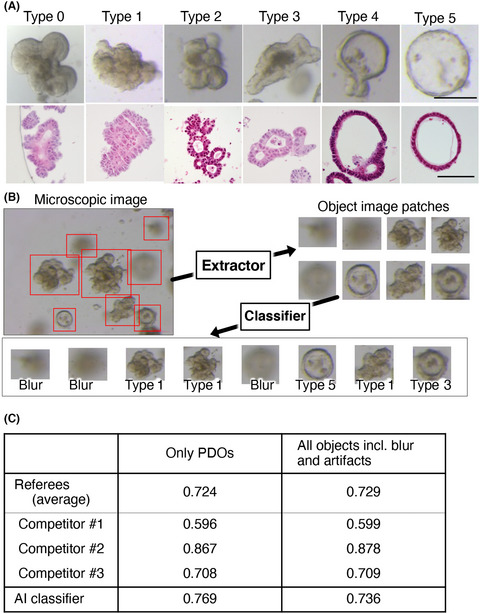
We developed an artificial intelligence (AI)-based classifier to categorize Patient-derived organods(PDOs). Transcriptome analysis identified differential expression of genes related to cell adhesion and ribosome biogenesis and an RNA polymerase I inhibitor, CX-5641, exhibeted type-specific response. These results uncover the biological significance of the morphology of PDOs and the AI-based classifier is a useful tool to support PDO-based cancer research.
CD73 facilitates invadopodia formation and boosts malignancy of head and neck squamous cell carcinoma via the MAPK signaling pathway
- Pages: 2704-2715
- First Published: 03 June 2022
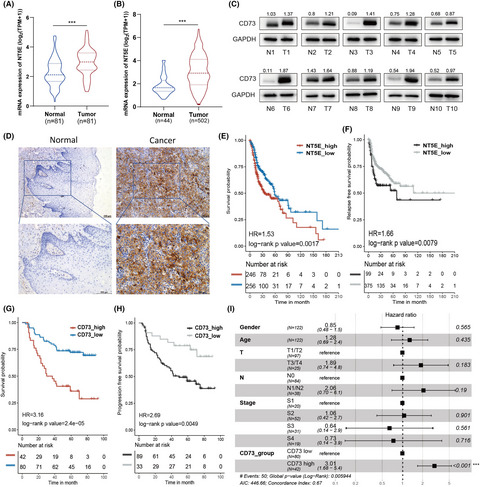
Despite immunomodulating role, corresponding molecular mechanism of CD73 involved in HNSCC progression are not well characterized. In this work, We found that CD73 was up-regulated in HNSCC tissues and could serve as independent prognostic factor. Based on the result of GSEA and GSVA, we found that CD73 take part in the invadopodia formation of HNSCC and activation of MAPK signaling pathway may account for the tumor promoting role of CD73.
Therapeutic advantage of targeting lysosomal membrane integrity supported by lysophagy in malignant glioma
- Pages: 2716-2726
- First Published: 03 June 2022

Quality control of lysosome biogenesis is thought to be a potential target for cancer therapy, however, practical strategies have not been established. Here, we show that lysosomal membrane integrity supported by lysophagy, a selective autophagy for damaged lysosomes, is a promising therapeutic target for malignant brain tumor.
High levels of chromosomal instability facilitate the tumor growth and sphere formation
- Pages: 2727-2737
- First Published: 05 June 2022
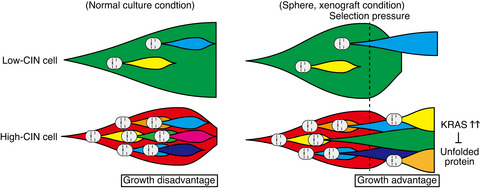
In this work, Iemura et al. addressed the role of chromosomal instability (CIN), a condition in which chromosome missegregation occurs at high rates, on the acquisition of tumorigenic potential. They utilized HeLa cell clones exhibiting different levels of CIN, and compared their growth in two-dimensional (2D) monolayer culture and three-dimensional (3D) sphere culture, which is more representative of the in vivo environment. They found that although CIN is disadvantageous in monolayer culture conditions, it promotes the selection of cells with growth advantage under in vivo environments, which may lead to tumorigenesis.
ELOVL5-mediated fatty acid elongation promotes cellular proliferation and invasion in renal cell carcinoma
- Pages: 2738-2752
- First Published: 07 June 2022
Hippo pathway monomerizes STAT3 to regulate prostate cancer growth
- Pages: 2753-2762
- First Published: 20 June 2022
Clinical Research
Feasibility and clinical utility of comprehensive genomic profiling of hematological malignancies
- Pages: 2763-2777
- First Published: 17 May 2022
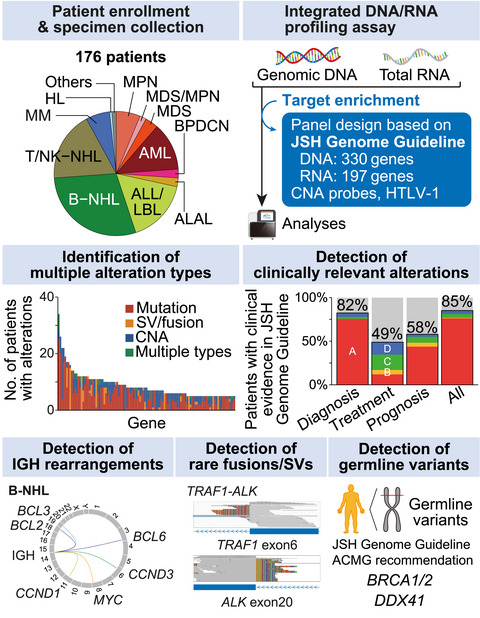
We have developed an integrated DNA/RNA profiling assay for detecting germline variants and somatic alterations, including structural variations and fusions, recurrently found in hematological malignancies. We performed a prospective hospital-based cohort study to demonstrate that our assay is feasible and useful for identifying clinically relevant alterations, particularly for diagnosis and prognostic prediction. These results suggest the clinical utility of our assay, thereby highlighting the promise of precision medicine in hematological malignancies.
Oral histone deacetylase inhibitor tucidinostat (HBI-8000) in patients with relapsed or refractory adult T-cell leukemia/lymphoma: Phase IIb results
- Pages: 2778-2787
- First Published: 17 May 2022
Tisotumab vedotin in Japanese patients with recurrent/metastatic cervical cancer: Results from the innovaTV 206 study
- Pages: 2788-2797
- First Published: 28 May 2022

There is a need for second-line treatments for patients with recurrent/metastatic cervical cancer (r/mCC). Tisotumab vedotin (TV), an antibody–drug conjugate, has been approved for treatment of r/mCC following a large phase 2 study in a non-Japanese population. The current study extends the feasibility of this regimen for use in Japanese patients with r/mCC.
A phase I study of the safety and efficacy of talimogene laherparepvec in Japanese patients with advanced melanoma
- Pages: 2798-2806
- First Published: 02 June 2022
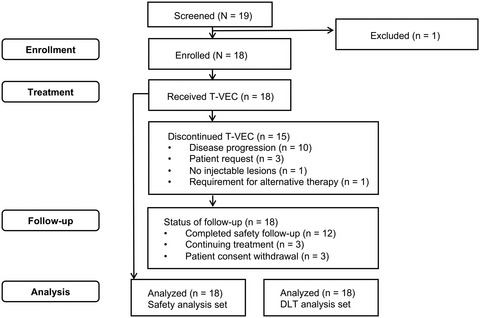
This phase I study assessed the safety and efficacy of talimogene laherparepvec (T-VEC) in Japanese patients with advanced melanoma including rare subtypes. The safety profile was similar to previous reports of T-VEC monotherapy, and the durable response rate was consistent with that observed in non-Asian patients.
Biological effectiveness and relative biological effectiveness of ion beams for in-vitro cell irradiation
- Pages: 2807-2813
- First Published: 31 May 2022
Phase IIb study of pembrolizumab combined with S-1 + oxaliplatin or S-1 + cisplatin as first-line chemotherapy for gastric cancer
- Pages: 2814-2827
- First Published: 14 June 2022
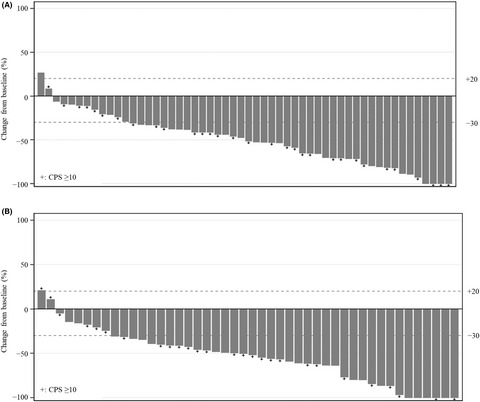
The KEYNOTE-659 study was a multicenter, open-label phase IIb study that evaluated the efficacy and safety of first-line pembrolizumab with S-1 + oxaliplatin (cohort 1) or S-1 + cisplatin (cohort 2) for advanced gastric/gastroesophageal junction cancer in Japan. In cohorts 1 and 2, the median follow-up times were 16.9 and 17.1 months, respectively; the objective response rates (primary endpoint) were 72.2% and 80.4%, respectively; and treatment-related adverse events occurred in all patients, including peripheral sensory neuropathy (94.4%, cohort 1), decreased neutrophil count (82.6%, cohort 2), nausea (59.3% and 60.9% in cohorts 1 and 2) and decreased appetite (61.1% and 60.9% in cohorts 1 and 2). First-line pembrolizumab with S-1 + oxaliplatin or S-1 + cisplatin showed favorable efficacy and manageable safety in PD-L1-positive, HER2-negative advanced gastric or gastroesophageal junction adenocarcinoma in Japanese patients.
Drug Discovery and Delivery
Development of a potent small-molecule degrader against oncogenic BRAFV600E protein that evades paradoxical MAPK activation
- Pages: 2828-2838
- First Published: 17 May 2022
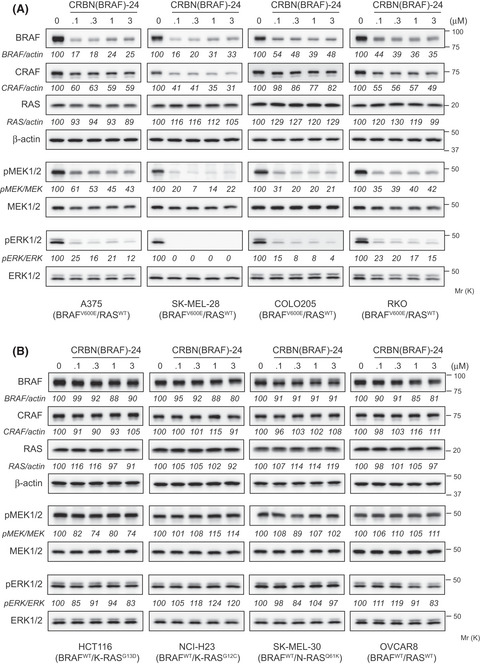
In this study, we developed chimeric compounds, proteolysis targeting chimeras (PROTACs), that target BRAF V600E protein for degradation. CRBN(BRAF)-24, the most effective chimera, selectively degraded BRAF V600E in a ubiquitin-proteasome system (UPS)-dependent manner and inhibited the proliferation of BRAF V600E-driven cancer cells. In BRAF wild-type cells, CRBN(BRAF)-24 induced neither BRAF WT degradation nor paradoxical activation of the MAPK pathway.
Epidemiology and Prevention
Dietary advanced glycation end products and cancer risk in Japan: From the Takayama study
- Pages: 2839-2848
- First Published: 05 June 2022
Genetics, Genomics and Proteomics
Mutation profiles in circulating cell-free DNA predict acquired resistance to olaparib in high-grade serous ovarian carcinoma
- Pages: 2849-2861
- First Published: 05 June 2022
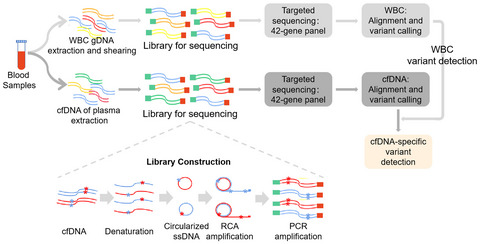
Mutation profiles in cfDNA can be used for efficacy evaluation and resistance monitoring of Olaparib maintenance therapy in HGSOC patients. Among them, the discovery of MRE11A:p.K464R not only provides a complementary or alternative indicator for the diagnosis and treatment of ovarian cancer, but also points out the direction for the development of combination therapy after Olaparib resistance.
Inflammation and Virology
Estrogen induces the expression of EBV lytic protein ZEBRA, a marker of poor prognosis in nasopharyngeal carcinoma
- Pages: 2862-2877
- First Published: 28 May 2022
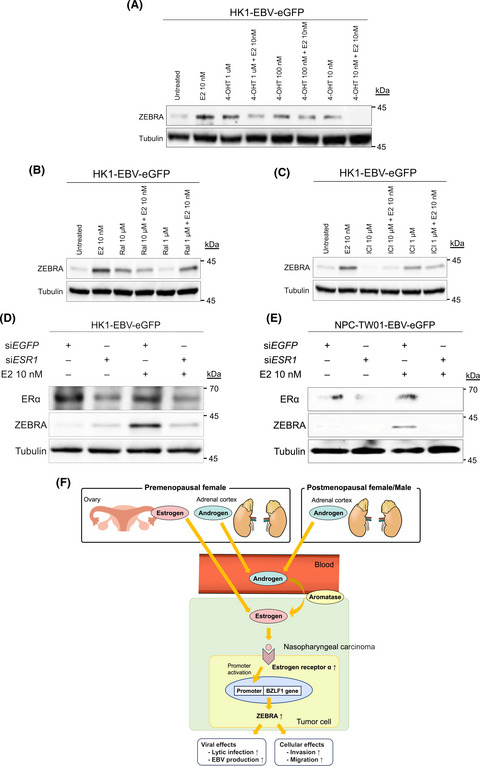
We have revealed that EBV lytic protein ZEBRA is significantly associated with poor prognosis of nasopharyngeal carcinoma. Moreover, our study suggests that locally expressed intratumoral estrogen induces EBV lytic protein ZEBRA expression from the gene expression level. We expect of the development of novel treatment modalities such as anti-hormonal treatment.
Pathology
Establishment of a monoclonal antibody against glycosylated CD271 specific for cancer cells in immunohistochemistry
- Pages: 2878-2887
- First Published: 28 March 2022
CircPCBP2 promotes the stemness and chemoresistance of DLBCL via targeting miR-33a/b to disinhibit PD-L1
- Pages: 2888-2903
- First Published: 17 May 2022
Oxidized high mobility group B-1 enhances metastability of colorectal cancer via modification of mesenchymal stem/stromal cells
- Pages: 2904-2915
- First Published: 15 May 2022
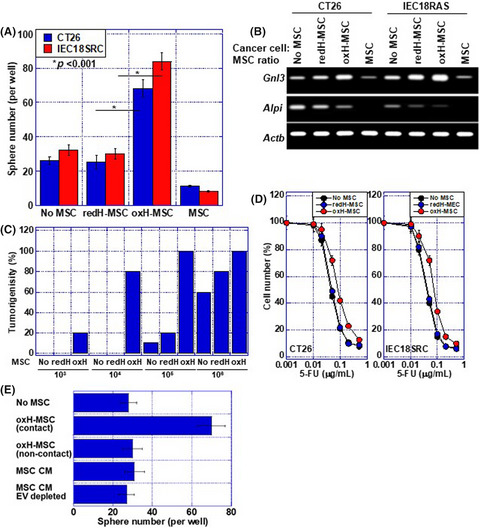
Reduced HMGB1 promoted chemotaxis of MSCs, decreased their stemness, and promoted their differentiation. In contrast, oxidized HMGB1 increased stemness and promoted proliferation of MSCs, and chemotaxis was decreased. Oxidized HMGB1 recruits MSCs into tumors and reprograms them, thereby increasing cancer stemness and promoting liver metastasis.
Label-free multiphoton excitation imaging as a promising diagnostic tool for breast cancer
- Pages: 2916-2925
- First Published: 17 May 2022





